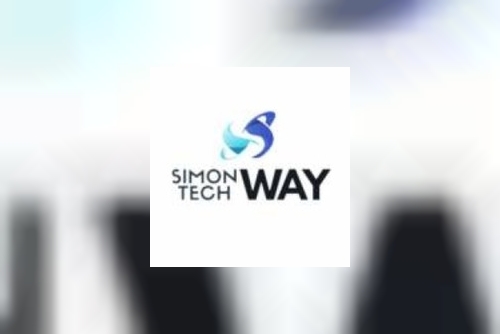Toenail fungus is very common and in most cases, it is merely a cosmetic problem. However, if left untreated, fungal toenails can affect mobility. Apart from walking difficulties, toenail treatment can permanently damage the nail bed. Therefore, it is important to get rid of the thick, crumbly and discolored toenails as soon as possible.
The conventional treatmentsfor nail fungus are oral medications and topical medications. These treatments are slow and less effective in killing the stubborn dermatophytes causing unsightly toenails. The faster and more effective option is nail fungus laser treatment.
In today’s post, we will discuss the treatment choice of laser toenail fungus removal and find out why it is better than conventional treatment options.
What is toenail fungus and how do you get the infection?
The fungal nail infection is called onychomycosis in medical terms. It primarily affects toenails and is less common in fingernails.It is a slow developing infection that results in discolored and brittle nails.
Common signs to identify toenail fungus are:
White, black, yellow, green or discolored nailsThickening or distorting nailsBrittle or crumbly nails
When left untreated for an extended period of time, fungal infection causes distorted toenails, which can make walking difficult.Fungi live under the toenails harmlessly, however, the condition can get worse and turn into a harmful infection if they are moist all the time.
Below are some common risk factors that contribute to fungal growth under the toenails and cause infection:
Feet are not clean and dryA footwear style causing excessive sweat and humidityWalking barefoot in common shower areas or gymsWeakened immune systemUnderlying health conditions like diabetes or psoriasisTrauma to nails
A toenail infection grows slowly,though it spreads very easily and quickly.Furthermore, the possibility of onychomycosis increases the likelihood of painful ingrown toenails.Therefore, one must take care of toenail health and take all the necessary precautions to keep the toenails protected.
How is toenail fungus treated?
The most common treatment for fungal toenails is a prescription medication that is taken orally. There are two types of medicines given to patients. One is an antifungal medication that slowly kills the fungi and other types of pills are prescribed to promote healthy nail growth so that it can replace the infected nails.
Depending on the severity of the infection, some podiatrists also recommend topical medications to effectively clear the infected site.One needs to take the medicines on a daily basis for at least nine months. It is indeed a really long time to get rid of an infection. Another treatment option is nail softening kits which are used to scrape off the infected part.
Toenail fungus is difficult to kill and to get rid of the stubborn germs, one needs to take toxic medicines for a really long time. The traumatic nail scraping experience, the risk of toxicity in the liver and the risk of increased microbial resistance can be avoided with the gold standard of Toenail Fungus Laserremoval.
The best medical laser for toenail fungus is an FDA approved low level laser device. Non-thermal laser technology enables effective and painless infection treatment. Lunula Laser is one of the only laser devices to get market clearance for the effective treatment of toenail fungus.
What happens during laser treatment of toenail fungus?
A board certified podiatrist using aLunula laser device calls the patient for only four 12-minute laser sessions. The number of sessions can be fewer for a mild infection. During the treatment, laser energy passes through the toenail to quickly kill the fungi. The Lunula laser is a non-thermal laser technology with a wavelength of 634nm. Hence, no heat is generated during the session and patients can comfortably get the treatment.
The laser beams kill the infection without causing damage to the surrounding skin. Consequently, there is no downtime and patients can resume their schedules right after the laser treatment session.
Is laser treatment worth it?
The Lunula laser is a non-thermal technology, therefore the treatment sessions are absolutely painless. Besides, clinical trials show evidence of the efficacy levels of laser treatment for toenail fungus.
The easy and painless procedure of the Lunula laser has an efficacy rate of 89%. The results are observed remarkably faster compared to the conventional treatment of prescription medications. Clinical trials show that laser therapy results in an average clear nail growth of 6.18 mm.
Patients would otherwise have to spend thousands of dollars on oral and topical medication and the added cost of doctor’s fee makes the slow and less effective conventional treatments even more expensive.
On the other hand, one can get rid of stubborn toenail fungus in just four laser sessions. Hence it can be said that laser treatment is worth the expense. Laser treatment is effective and one should consider getting it because
Laser treatment is faster and more effectiveLow level laser is painless and anyone can get itLaser treatment has no evidence of adverse effects and is completely side effect freeLaser is feasible and affordable when compared to the slower and less effective conventional treatments
Conclusion
Onychomycosis is a stubborn infection. When all conventional treatments fail, laser removal of toenail fungus is the best choice. Favorable evidence from clinical studies shows that low level laser is the most effective treatment option for toenail fungus.
Schedule an appointment at Orange County Feet and Ankle Group andget the gold standard treatment for toenail fungus. Patients searching for a board-certified Podiatrist in Orange Countycan connect with the specialists at OCFA. Here you can get the best low-level laser therapy from the FDA-approved Erchonia Lunula Level device. Further, it is the best known clinic for complete foot care including Ingrown Toenail Surgery, sports injuries, diabetic foot care and heel pain.









 Digital Marketing Course Curriculum- What You Should Expect to Learn in 2025
Digital Marketing Course Curriculum- What You Should Expect to Learn in 2025


